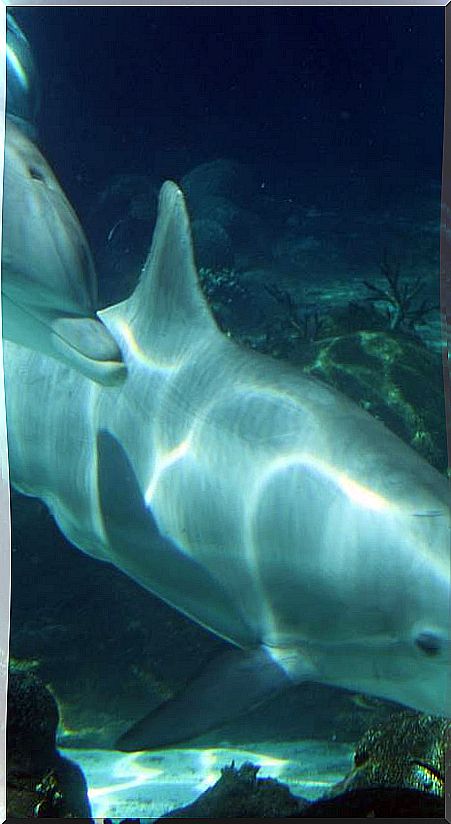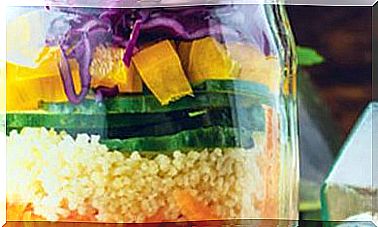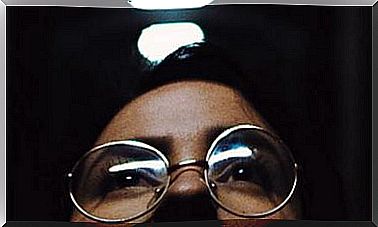6 Reasons Not To Go To A Marine Park This Summer
Shows with dolphins and marine animals are very popular, especially in summer. This is the shame behind the scenes.

It is high season for marine parks. Dolphinariums and zoos rub their hands waiting for the thousands of visitors who during the summer will come to their facilities to enjoy a day of entertainment and water shows.
But after the show, not everyone goes home.
Spain is the largest marine mammal cage in Europe and leads the whale and dolphin show business in the European Union. Ignoring the international trend by which the restriction of dolphinariums grows progressively and the creation of sanctuaries for these animals increases, Spain brings together a third of the entire EU with 11 facilities and a new project under construction in Lanzarote.
Especially in the coastal areas all kinds of aquatic circuses focused on summer and water tourism such as amusement parks or resorts proliferate, places that are not specialized in the management and care of these animals, nor do they have any conservationist or educational claim, they simply include shows with cetaceans as a commercial claim within their leisure proposals.
Although due to the high mortality the figure varies, in Spain there are approximately 98 dolphins, 2 belugas and 6 orcas kept in captivity, that is, more than 100 animals in 11 enclosures compared to the 200 that the rest of the continent houses in its 19 marine parks. The opening of the Lanzarote dolphinarium would add 5 more dolphins to this list of shame.
1 in 3 cetaceans in captivity in Europe are in Spain
And this is swimming against the current. Against the social tide that increasingly claims that the home of cetaceans is the ocean and firmly rejects their captivity, and against the trend that goes in the opposite direction in the countries around us, where dolphinariums such as the the only one in Finland or one of six in Italy.
Sea Animal Shows: The Backstage Shame
It is relatively easy to be fascinated by the observation of these incredible animals and the shows in which we can see them in action and seemingly complicit interaction with human beings. They are majestic creatures and in this type of installation they make sure to generate an exciting experience for the public.
But although dolphins always seem smiling, it does not mean that they are happy, so below you will find six reasons not to go to water parks with animals this summer.
1. They are violently uprooted from their habitat
Cetaceans in captivity have a high mortality, so the number of specimens kept under these conditions is insufficient to maintain a growing industry. For this reason , captures of wild cetaceans continue, mainly in Cuba, Japan and Russia. 34 of the dolphins currently living in Spanish facilities were captured from the wild according to data from SOS Delfines.
Captures are invasive, stressful and lethal in many cases too. The animals are chased and harassed to scare them until they are directed to a certain point that facilitates the task. Many animals die of heart failure from the stress and shock to which they are subjected.
It is common for some animals to die after the first days in captivity due to depression and weakness caused by being separated from their groups.
2. They live in a tiny pool
The tanks where these animals spend their lives are small, with shallow waters and chemically treated, which causes them many problems with their skin and eyes.
Because in these aquatic cages they have nothing to discover, captive cetaceans stop using their natural sonar and if they use it, it bounces off the walls and ends up seriously affecting their perception thresholds, which causes them to suffer in the long run. collisions with the walls in which they are injured and in some cases, even killed.
In their natural state, cetaceans travel significant distances of between 95 and 160 km per day and at speeds of up to 40 km / h for dolphins and 55 km / h for orcas. They get to submerge up to 90m deep and barely spend 10% of their time on the surface of the water.
This is impossible for them when they are kept in pools that are only a few meters long. According to FAADA, it is estimated that a killer whale would have to do 1,400 daily laps of its tank to swim what it would do in a single day in freedom.
3. No shade to protect from the sun
Another element to take into account is that in these facilities the animals cannot protect themselves from the sun, which causes problems in their sensitive skin and this overexposure damages their eyes, even causing cataracts.
When they live in freedom, cetaceans spend most of their time at great depths where they are not affected by ultraviolet rays, but in captivity we find animals with burns due to the lack of protection against solar radiation.
4. Forced to live with strangers
Cetaceans live in very numerous groups, of tens and even hundreds of individuals with strong ties that make them very cohesive and stable groups over time.
When they live in captivity, they are separated from their natural groups and forced to live with each other animals of different origins, which greatly hinders their relationships, the establishment of natural hierarchies, dominance wars and even aggressive behavior between them.
To avoid these behavior problems and attacks between animals, it is usual that they are administered tranquilizers and antidepressants.
5. The violence of training and shows
Cetaceans in captivity are forced to carry out numerous behaviors completely unnatural for them that even become dangerous for their physical integrity.
Cetaceans are forced to work strenuous hours, reaching up to 7 shows a day, which increases in summer with night shows.
In addition, they are still trained in many centers through food deprivation and although it is not widespread, cases of physical violence against these animals have been reported, with trainers found jumping, hitting or throwing objects at the animals.
In shows it is common for animals to be forced to jump out of the water and to spend time leaning on the surface of the concrete, which poses a significant danger to their bodies that are not prepared for the effects of gravity.
6. His mortality is 3 times higher
The studies carried out show that the life expectancy of dolphins is lower in captivity. In nature they reach 50-60 years, while in captivity they do not exceed 20 and in the case of killer whales, mortality is 3 times higher than in nature.
Depression, stress, the artificiality of the environment, the immunosuppression that they suffer due to these factors and that exposes them to numerous diseases make it more dangerous for them to live in a pool than in the wild.
Every time we buy a ticket to go to zoos, dolphinariums and animal shows, we are contributing to this cruel industry, which continues to kidnap and mistreat our planetmates.
Please, before going to a marine park this summer, remember that we are your greatest threat and your only hope.








